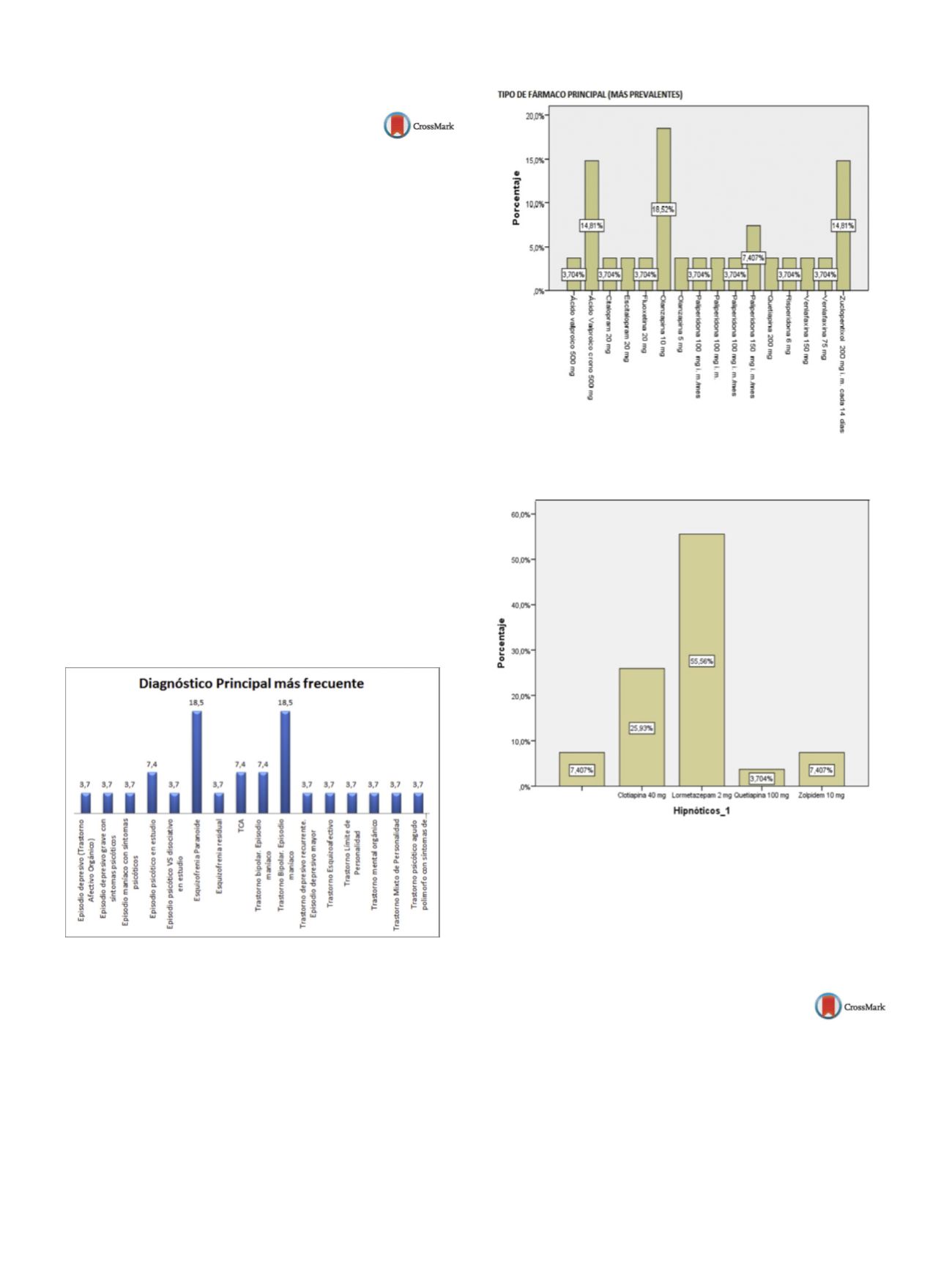

S798
25th European Congress of Psychiatry / European Psychiatry 41S (2017) S772–S846
EV1207
Approach in a mental health
hospitalization unit
M. Rodríguez
1 ,∗
, V. Pérez
1, D. Linares
1, S. Jose María
21
Centre Hospitalier Torrecárdenas, Psychiatry, Almería, Spain
2
Centre Hospitalier Torrecárdenas, Psychology, Almería, Spain
∗
Corresponding author.
Introduction
The mental health hospitalization unit of Torrecár-
denas Hospital consist of a team of professional psychologists,
psychiatrists, nurses and occupational therapists who perform
different approaches to look after the hospitalized patient. The
therapeutic Objective of this unit is the containment and imple-
mentation of intensive interventions in a crisis situation in which
it has not been possible to achieve an improvement or control of
the patient’s symptoms in external resources.
Material and methods
We performed a descriptive cross-
sectional study with patients hospitalized at the mental health
hospitalization unit between September 22 and October 28, taking
into account the age, sex, admitted, diagnoses, previous treatments,
psychological approach and free hospital stay.
Results
( Figures 1–3 ).Conclusions
The results of this study indicate the most prevalent
patient profile has a diagnosis of severe mental disorder. The 66.7%
of patients had previous hospital admissions. The 81.5% of hospital
admissions are involuntary. The normative psychopharmacological
prescription is an atypical antipsychotic as main treatment in our
study. We highlight the use of Olanzapine with an 18.52% being
consolidated as the first therapeutic option. As adjunctive treat-
ment we have amood stabilizer such as Valproic Acidwith 11.1%; or
another antipsychotic such as Paliperidone with the same percent-
age (11.1%). Regarding hypnotic treatment, it should be pointed
out the use of medium-life benzodiazepines (Lormetazepam) with
a prevalence of 55.56%.
Fig. 1
Fig. 2
Fig. 3
Disclosure of interest
The authors have not supplied their decla-
ration of competing interest.
http://dx.doi.org/10.1016/j.eurpsy.2017.01.1537EV1208
The genetic methods for
drug-resistant epilepsy
M. Salohiddinov
Tashkent Medical Academy, Psychiatry and narcology, Boyovut,
Uzbekistan
Actuality
Mechanisms of underlying pharmacoresistance have
been explored insufficiently. Enzymes of a system for biotrans-
formation of xenobiotic and transporters for drugs are the key
participants in the systems of metabolism of antiepileptic drugs
(AEDs). Among proteins-transporters, glycoprotein P encoded by
MDR1 gene plays an essential role in the processes of uptake, dis-
tribution and excretion of AEDs.


















